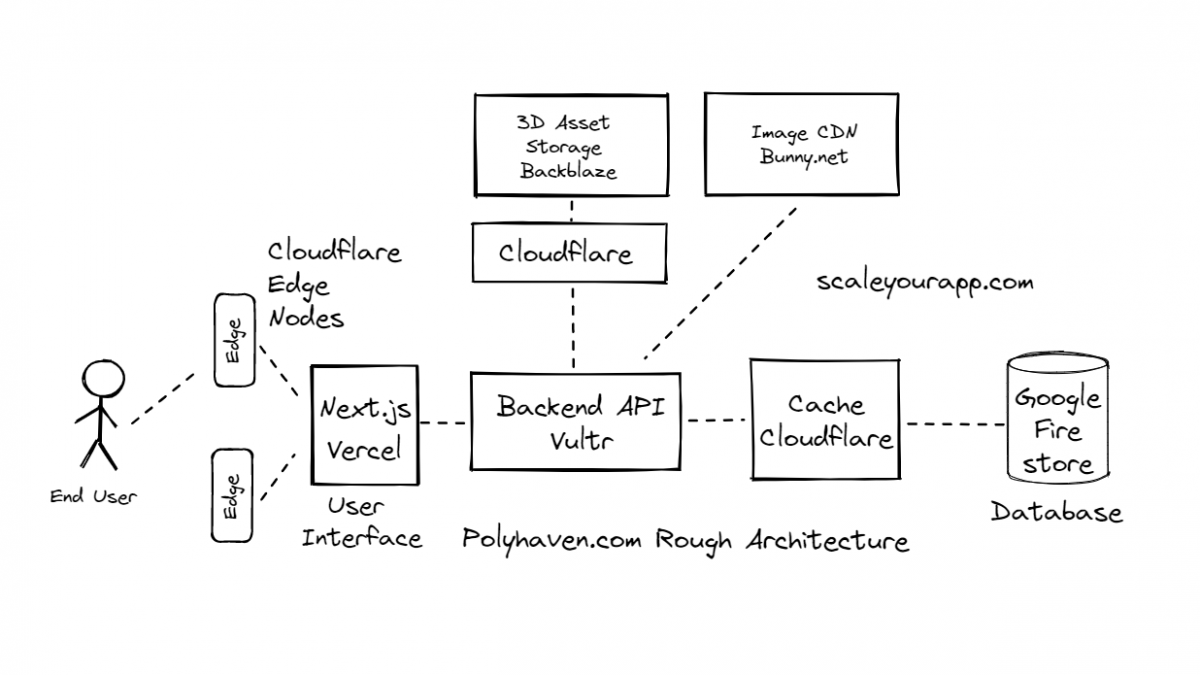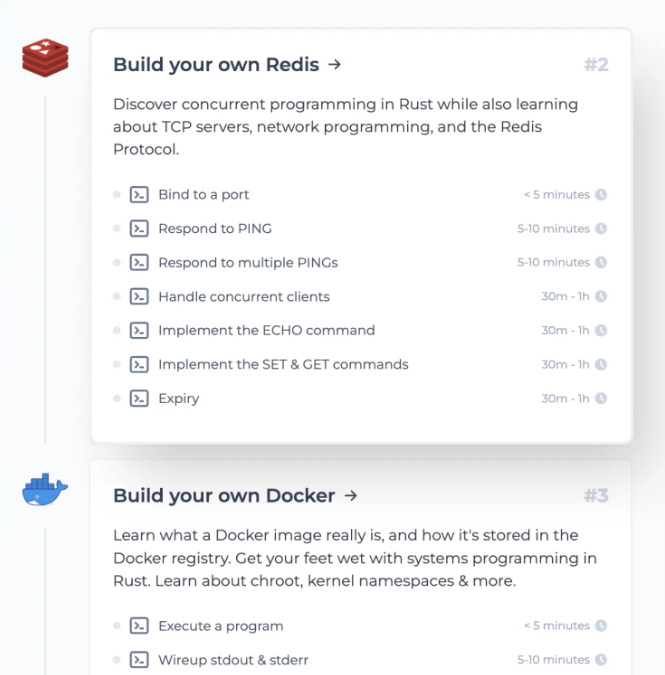Application Hosting – How PolyHaven Manages 5 Million Page Views and 80TB Traffic a Month for < $400
Polyhaven, a 3D asset library, recently provided insightful data on how they manage to serve 5 million page views a month, consuming a bandwidth of 80 terabytes just under 400 USD.
If the same amount of traffic was served from AWS S3 object storage, that would cost more than 4K USD a month.
So how do they pull this off every month?
Here are the highlights:
Data Storage
3D Asset Storage
The caching layer of the app is powered by Cloudflare. Static asset downloads from the cache account for 85% of the traffic. This cuts down most of the load on the storage server with a cost of just 40 USD a month.
The cache layer is further optimized by a Cloudflare product Argo, this improves the cache hit ratio to 93%.
Argo is an additional Cloudflare service that optimizes the DNS routes increasing the latency. It also adds an additional layer to the cache.
So, if someone downloads a file in London, Cloudflare, besides caching that file for London, will also cache that file for the whole of Western Europe. This increases the cache hit ratio for the application. But this additional feature comes with a cost. 160 USD per month has to be paid for the Polyhaven data that goes through the Argo network. But this is still less in comparison to the database costs that would add up serving 80TB of data.
All the 3D asset data is stored on Backblaze cloud storage. Empowered by a partnership of Cloudflare and Backblaze, Polyhaven just have to pay 11 USD a month for the storage service; this includes the storage fee, data upload costs and the data fetch API requests.
Image Storage
The images on the website that are thumbnails of the assets, renders, previews, etc., are stored using another CDN service Bunny.net. Besides providing hosting, the CDN service also dynamically resizes and compresses the images for the website costing 27 USD per month.
Application Hosting
The site is built using Next.js powered by Vercel servers. Vercel manages the site’s servers offering a serverless environment. The base fee for this is 20 USD a month. Also, the Cloudflare cache is leveraged to avoid unnecessary hits to the server.
The 3D assets are stored on the cloud object storage and the website database that is Google Firestore (a serverless document database) stores info on the 3D assets, download logs and so on. This costs them approx. 100 USD a month. Again a cache layer in front of it averts the DB hits.
A separate API powered by Vultr compute connects the frontend to the database and gives them control over caching the database reads.
Running the API on a separate compute service keeps the costs of the Vercel server within limits. The Vultr API costs them 5 USD a month.

Adding up the costs (Caching Cloudflare with Argo: 200 USD, Asset storage Backblaze: 11 USD, Image Storage Bunny.net: 27 USD, Database Firestore: 100 USD, Vultr API: 5 USD) costs them less than 400 USD.
More writeups on real-world architectures here.
Mastering the Fundamentals of the Cloud
If you need to understand the fundamentals of cloud computing in-depth. Check out my platform-agnostic Cloud Computing 101 course. After having spent a decade in the industry writing code, I strongly believe that every software engineer should have knowledge of cloud computing. It’s the present and the future of application development and deployment.

Shivang
Related posts
Zero to Software Architecture Proficiency learning path - Starting from zero to designing web-scale distributed services. Check it out.
Master system design for your interviews. Check out this blog post written by me.
Zero to Software Architecture Proficiency is a learning path authored by me comprising a series of three courses for software developers, aspiring architects, product managers/owners, engineering managers, IT consultants and anyone looking to get a firm grasp on software architecture, application deployment infrastructure and distributed systems design starting right from zero. Check it out.
Recent Posts
- System Design Case Study #5: In-Memory Storage & In-Memory Databases – Storing Application Data In-Memory To Achieve Sub-Second Response Latency
- System Design Case Study #4: How WalkMe Engineering Scaled their Stateful Service Leveraging Pub-Sub Mechanism
- Why Stack Overflow Picked Svelte for their Overflow AI Feature And the Website UI
- A Discussion on Stateless & Stateful Services (Managing User State on the Backend)
- System Design Case Study #3: How Discord Scaled Their Member Update Feature Benchmarking Different Data Structures
CodeCrafters lets you build tools like Redis, Docker, Git and more from the bare bones. With their hands-on courses, you not only gain an in-depth understanding of distributed systems and advanced system design concepts but can also compare your project with the community and then finally navigate the official source code to see how it’s done.
Get 40% off with this link. (Affiliate)




Follow Me On Social Media